Tiny house living has been picking up pace over the last decade and it isn’t surprising why. Tiny houses are a great way to live in an increasingly hostile housing market. Plus, you can save a ton of money, as you can see in this study, created using real estate infographic templates.
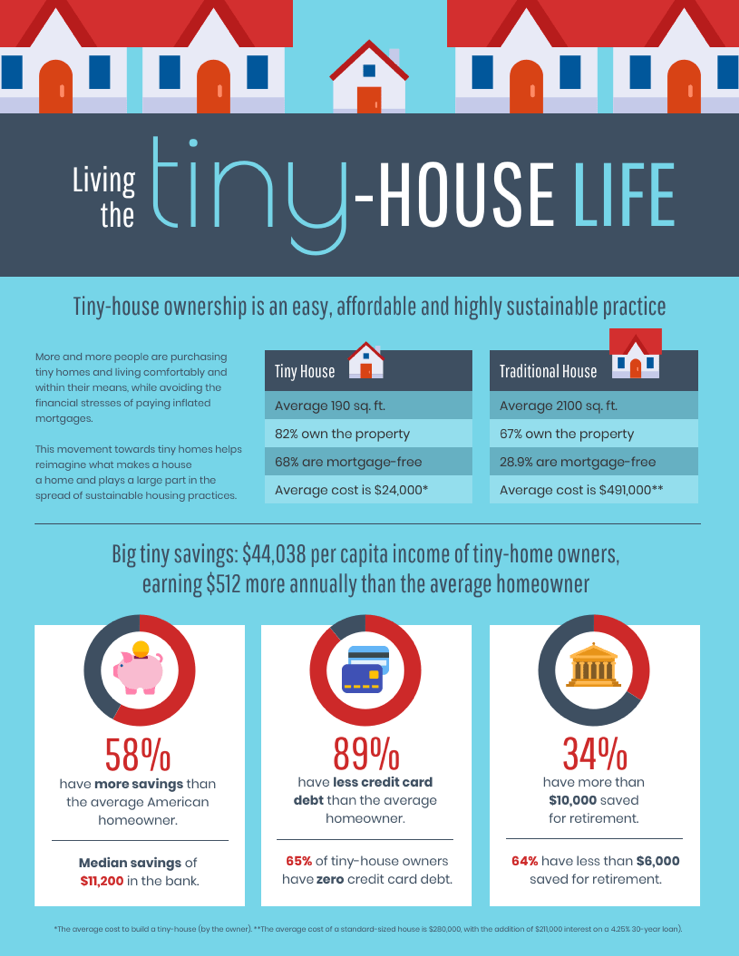
With rents increasing and real estate prices soaring, tiny house living is clearly the way to go! But for people used to living in regular-sized houses, the shift can be a challenge. We have some hacks that will help you maximize the space in your tiny house.
Bring in Light
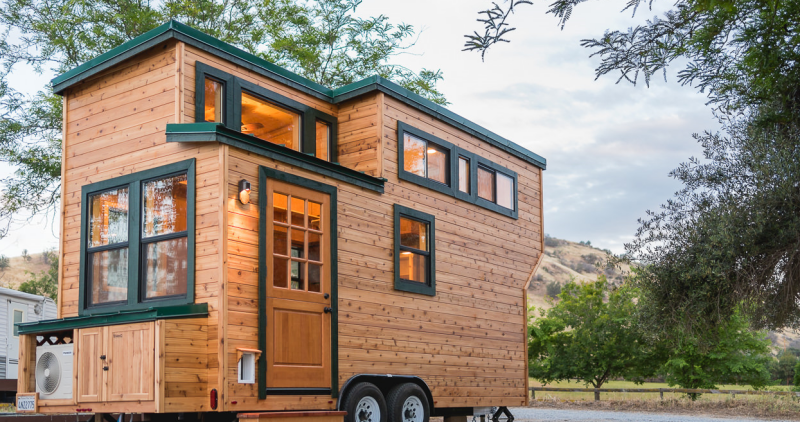
Tiny houses are small, and that can make residents feel cramped and claustrophobic. One way to avoid this is by bringing in as much light into your tiny house. Consider adding large windows to your tiny house—the larger, the better, as that will bring in more light, thus brightening up the area and making it feel bigger than it is. You should also invest in a skylight that will help to give the house a more even light flow, thus creating a comfortable and open feeling.
If you’re worried about privacy, you can always add curtains that will give you the privacy you want as well as the light your house needs.
Artificial Light
It may not always be possible to add windows to your tiny house. In that case, investing in artificial lighting is a good idea. Large ceiling lights will give off enough light to cover a fair amount of space, thus brightening up open areas.
Add lamps in dark corners—these create optical illusions that ‘extend’ the room, while also illuminating more of the space.
Accessorize
A tiny house may be small, but it is still a house. With that in mind, remember to add accessories that give the house your personal design stamp. Add rugs, throw pillows, decorative items, and art around your house to make it look more personable and cozy.
Mirrors are a great addition because they beautify the space while making it look larger.
Mega Art
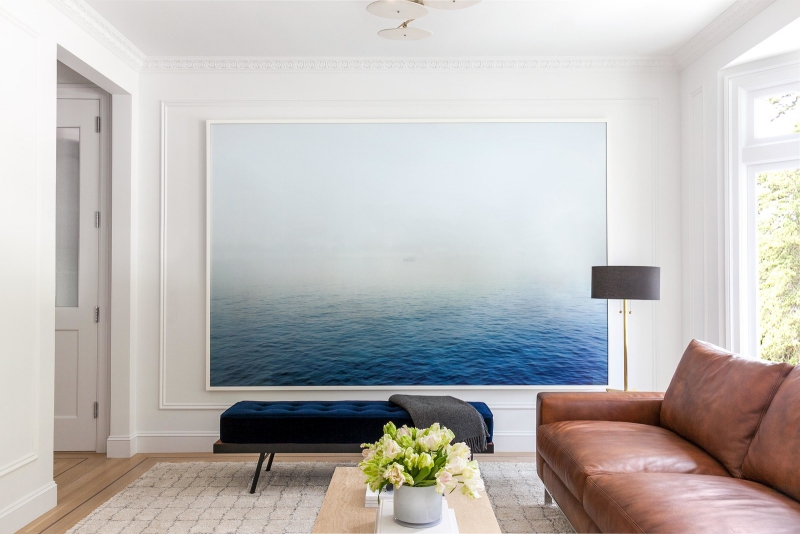
Photo Credit – Kathryn MacDonald
One would think that a tiny house should be decorated with tiny art. But this is actually the opposite of what you should do. Small art clustered together can look cluttered. Additionally, small art might get lost in an already small space where everything is competing for attention. Instead of adding multiple small art pieces in your tiny house, invest in a few oversized pieces.
Mega sized art can act as a feature wall for the house—not only will it draw the eye, but it will give the illusion of the space being larger than it is.
Open up Your Space
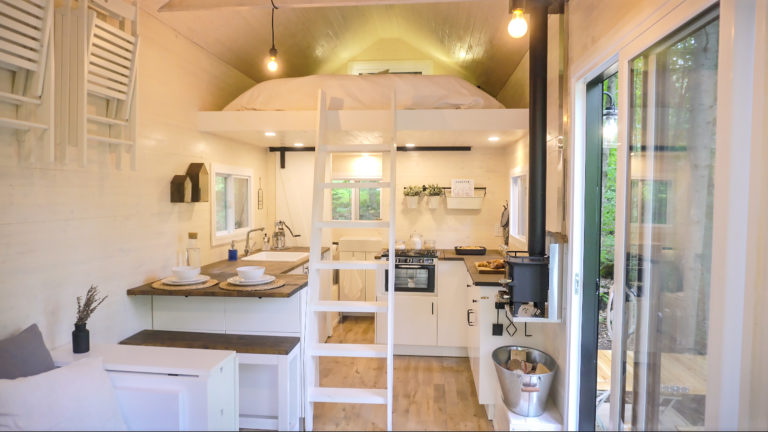
A tiny house has very little square footage, so why clutter it up with walls and doors? Instead of having endless small rooms inside your tiny house, keep the space completely open. Open concept is the trending design style now, and it is a particularly useful style for tiny houses. Forego your doors and walls and open up the space entirely. This is a style that could take some getting used to but the open concept look will save you space and look amazing.
Create Zones
Though an open concept design is almost essential for a tiny house to work, having designated areas in the house is often a necessity. Particularly when there is more than one person living in the tiny house. However, that doesn’t mean you have to put up walls and doors that will eat up your limited space. You can create zones or rooms in your tiny house by adding glass panels, pocket doors, sliding doors, or curtains. These don’t take up nearly as much space as a solid wall or door, but they do allow you to create distinct areas within your home.
Limit Cabinet Doors
Speaking of doors, your tiny house cannot accommodate the number of doors that a regular-sized home can. But we aren’t simply talking about doors to rooms here—we are also alluding to the doors of cabinets and cupboards. Doors take up space because they open out, which means less real estate within your house that can be used for a piece of furniture or storage. Instead of keeping your cabinet doors, consider open shelving units. This will mean that you can’t allow clutter—but this is a no-brainer for a tiny house.
Alternately, you can add small curtains on your storage pieces—these will add to the neatness and privacy your storage requires while also saving you space.
Vertical Storage
A tiny house has limited floor area, which makes storage a challenge. However, one area that tiny houses do not lag behind in is verticality. Most tiny houses have a few feet of space above the heads of the home’s residents, and this space can be put into excellent use. Instead of looking to add storage across your floors, use up the wall space and areas near your ceiling.
For instance, areas above your furniture—like your couch or bed—can be used to mount storage cabinets. You can also hang storage from the ceiling—but ensure it isn’t too heavy. Creating floor-to-ceiling storage is a great way to use the limited space available to you, and ensures that you have as much storage as you need.
Creative Storage

Being creative with your storage is key. Floor-to-ceiling storage is a necessity, but you can also look at other areas to add more storage. For example, the area under your stairs can be turned into small cupboards or drawers. Create storage under your bed, chairs, and couch, as well as within your window seats. If there is an area that isn’t being used for storage, think about how you can change that. The biggest challenge in tiny house-living isn’t so much the small space, but the lack of storage. Being creative with where you create storage will make tiny house living that much more joyful.
Resourceful Furniture
No matter the size of your home, furniture is a necessity. But when the space available to you is limited, you need to choose your furniture wisely. For one, don’t invest in too much furniture—too many pieces can become a trip hazard.
Instead, think about investing in a few large pieces—like a big sofa, or bed. It is important that these pieces be comfortable, after all. On the other hand, keep your dining table small, as well as your side tables—these can take up unnecessary amounts of space, so small pieces are a wiser choice. All your furniture will need to do double-duty. That means stools that double up as side-tables, extendable dining tables, as well as foldable desks and beds.
These will help you save space while still having a functioning house.
A tiny house doesn’t mean a bland house—you can make your tiny house reflect your personality and taste by making a few adjustments.
The above hacks will help you make the most of the little space you have, so you can live large in your tiny house.
Ronita Mohan is a content marketer at Venngage, an infographic maker and design platform. She enjoys writing about content marketing, productivity, design, the digital world, as well as pop culture, and diversity.

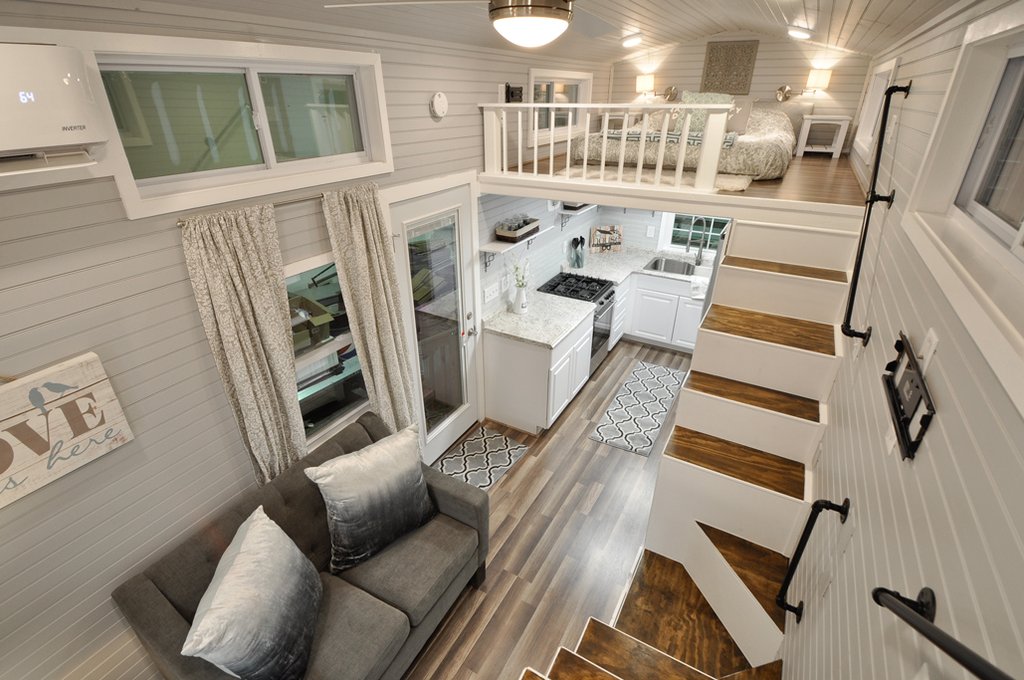


Comments are closed.